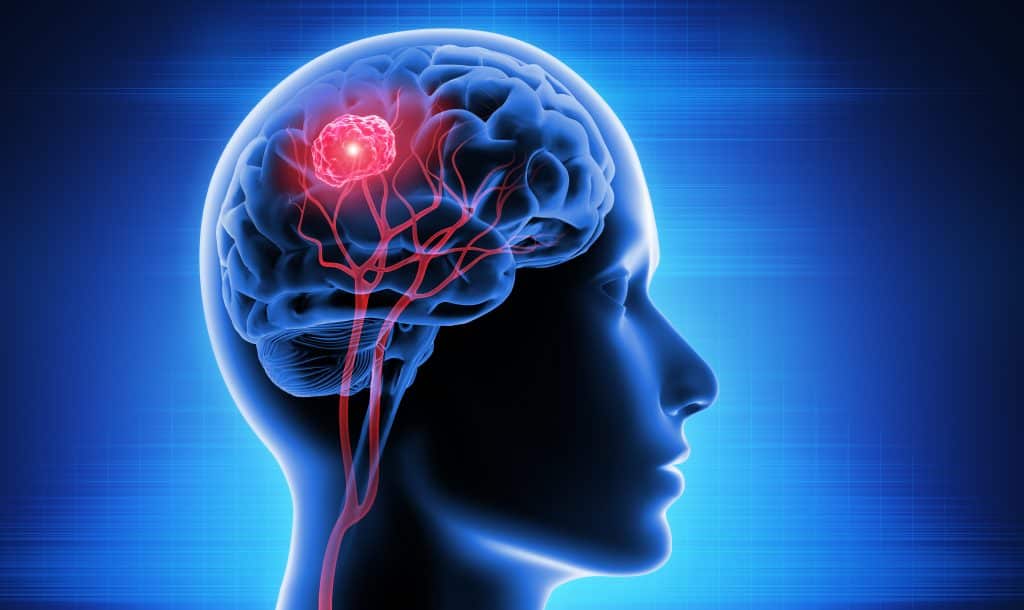
May is Brain Cancer Awareness Month
A brain tumor is a collection, or mass, of abnormal cells in the brain. The skull is very rigid and leaves no room to accommodate even a benign mass. Brain tumors can be cancerous (malignant) or noncancerous (benign). When benign or malignant tumors grow, they can cause the pressure inside your skull to increase. This can cause brain damage, and it can be life-threatening.
Brain tumors are categorized as primary or secondary. A primary brain tumor originates in the brain and many primary brain tumors are benign. A secondary brain tumor, also known as a metastatic brain tumor, occurs when cancer cells spread to the brain from another organ, such as the skin, kidney, lung or breast. The most common cancers that spread to the brain are breast, kidney, and lung cancers, as well as leukemia, lymphoma, and melanoma. Metastatic brain tumors are more common than primary brain tumors. About half of metastatic brain tumors are from lung cancer.
According to the American Association of Cancer Research, this year some 25,050 people in the United States are expected to be diagnosed with brain cancer and other nervous system cancers. These cancers make up a portion of the nearly 89,000 brain tumors that will be diagnosed in this country in 2022. The National Cancer Institute’s Surveillance, Epidemiology, and End Results (SEER) Program estimates that some 18,280 people in the U.S. will die from brain and other nervous system cancers in 2022. Brain tumors account for 85% to 90% of all primary central nervous system (CNS) tumors. Worldwide, an estimated 308,102 people were diagnosed with a primary brain or spinal cord tumor in 2020 according to ASCO. About 4,170 children under the age of 15 will also be diagnosed with a brain or CNS tumor this year in the United States.
According to ASCO, brain and other nervous system cancer is the 10th leading cause of death for men and women. It is estimated that 18,280 adults in the United States (10,710 men and 7,570 women) will die from primary cancerous brain and CNS tumors this year. Worldwide, an estimated 251,329 people died from primary cancerous brain and CNS tumors in 2020.
Age is a factor in general survival rates after a cancerous brain or CNS tumor is diagnosed. The 5-year survival rate for people younger than age 15 is about 75%. For people age 15 to 39, the 5-year survival rate nears 72%. The 5-year survival rate for people age 40 and over is 21%. However, survival rates vary widely and depend on several factors, including the type of brain or spinal cord tumor.
Brain tumors in general are more common among Caucasians. However, African-American people are more likely to get meningiomas. People who have been exposed to ionizing radiation have an increased risk of brain tumors. Patients can be exposed to ionizing radiation through high-radiation cancer therapies. People can also be exposed to radiation from nuclear fallout. The nuclear power plant incidents in Fukushima and Chernobyl are examples of how people can be exposed to ionizing radiation.
Interestingly, according to the American Brain Tumor Association, people with a history of childhood chicken pox have a decreased risk of getting brain tumors.
Symptoms of brain tumors depend on the location and size of the tumor. Some tumors cause direct damage by invading brain tissue while some cause pressure on the surrounding brain. There will be noticeable symptoms when a growing tumor is putting pressure on brain tissue.
Headaches are a common symptom of a brain tumor. Headaches typically:
- are worse in the morning when waking up
- occur while sleeping
- are made worse by coughing, sneezing, or exercise
Other side-effects include:
- vomiting
- blurred vision or double vision
- confusion
- seizures (especially in adults)
- weakness of a limb or part of the face
- a change in mental functioning
Because the brain is responsible for everything that happens in the body, other common symptoms include:
- clumsiness
- memory loss
- confusion
- difficulty writing or reading
- changes in the ability to hear, taste, or smell
- decreased alertness, which may include drowsiness and loss of consciousness
- difficulty swallowing
- dizziness or vertigo
- eye problems, such as drooping eyelids and unequal pupils
- uncontrollable movements
- hand tremors
- loss of balance
- loss of bladder or bowel control
- numbness or tingling on one side of the body
- trouble speaking or understanding what others are saying
- changes in mood, personality, emotions, and behavior
- difficulty walking
- muscle weakness in the face, arm, or leg
The treatment of a brain tumor depends on:
- the type of tumor
- the size of the tumor
- the location of the tumor
- general health
The most common treatment for malignant brain tumors is surgery. The goal is to remove as much of the cancer as possible without causing damage to the healthy parts of the brain. While the location of some tumors allows for easy and safe removal, other tumors may be located in an area that limits how much of the tumor can be removed. Even partial removal of brain cancer can be beneficial. Metastatic brain tumors are treated according to guidelines for the type of original cancer.
Surgery may be combined with other treatments, such as radiation therapy and chemotherapy.
Early identification and treatment can prevent complications that can occur as a tumor grows and puts pressure on the skull and brain tissue.
To learn about exercise programing for brain cancer patients and survivors:
